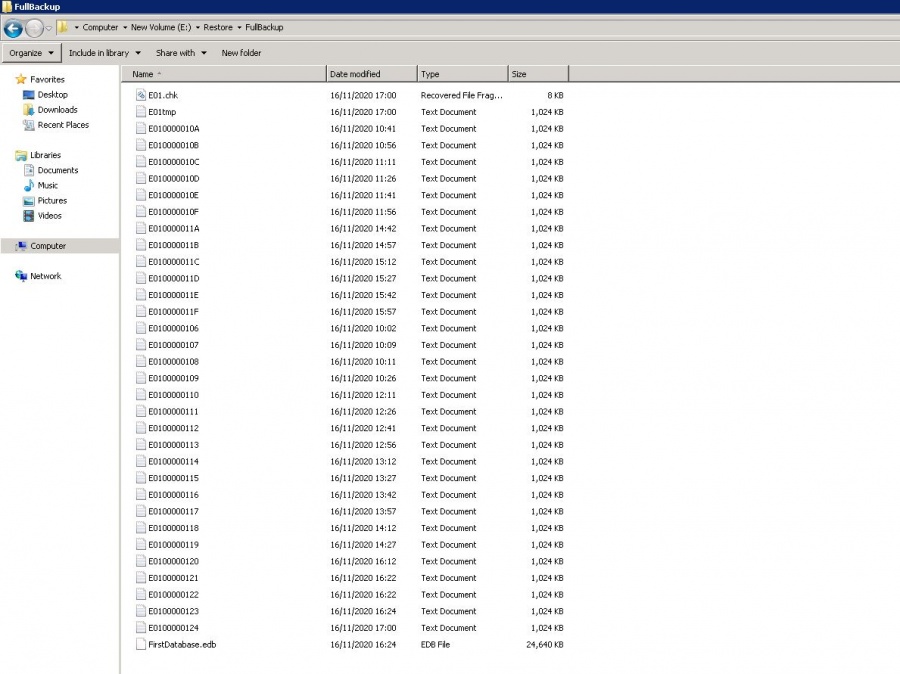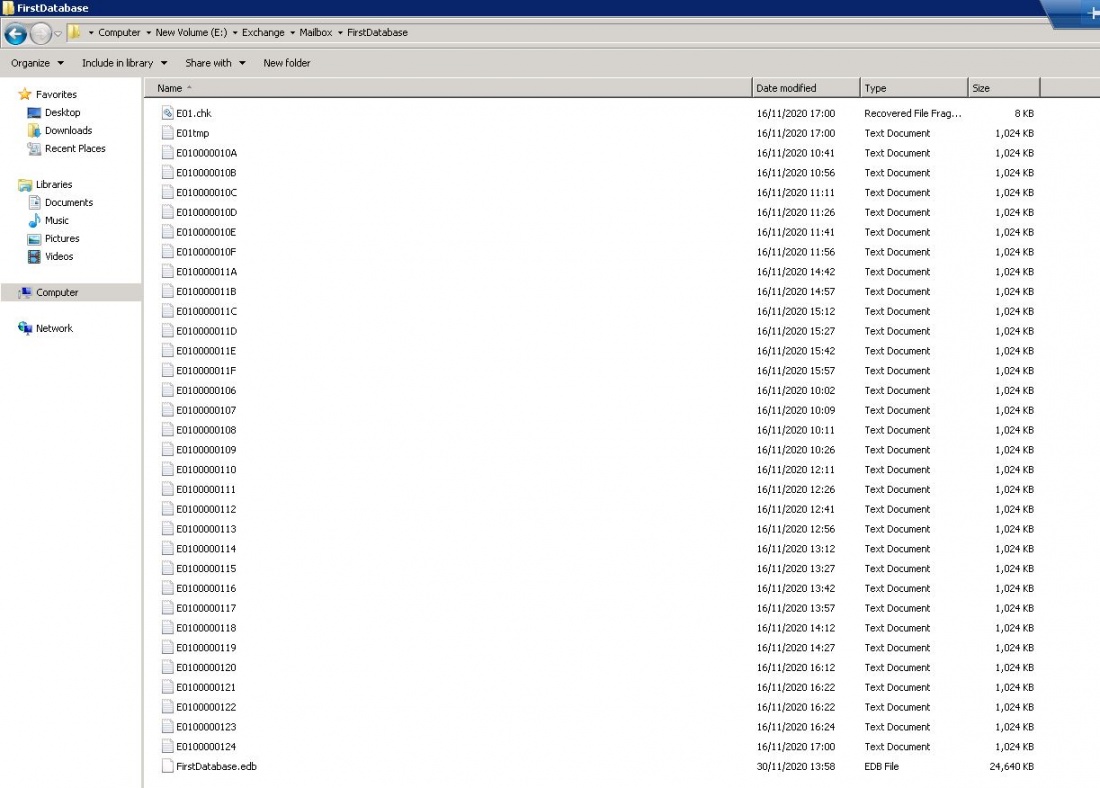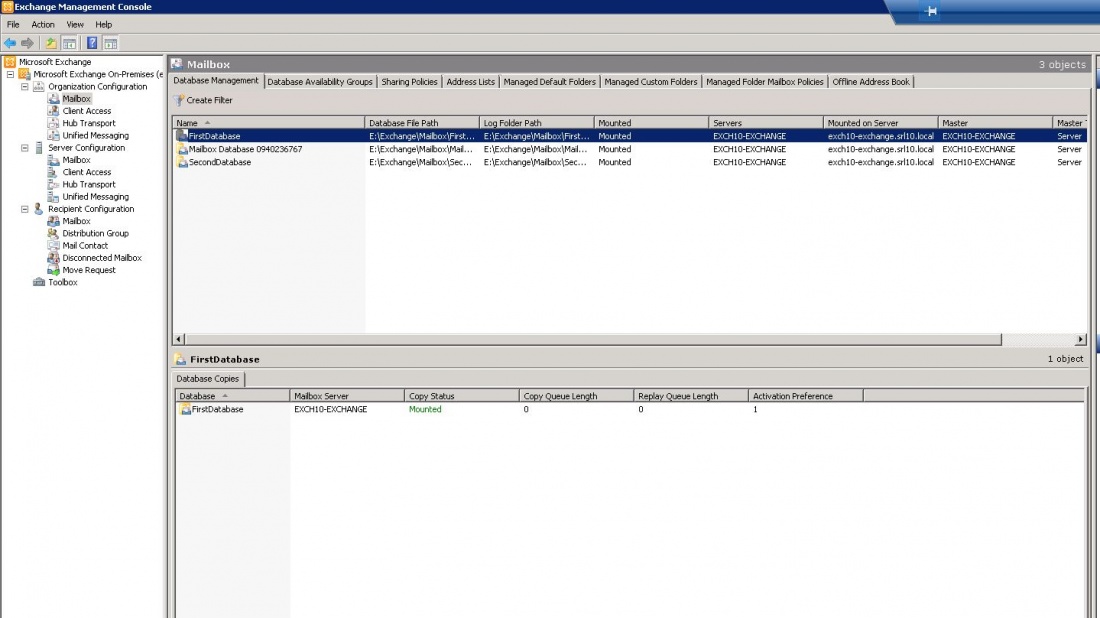Difference between revisions of "Recovery as Normal Files(Microsoft Exchange)"
(Created page with "Below documentation shows how to restore Exchange data after it has been recovered as normal files using steps as shown in [[Recovery as Normal Files|Recovery as Normal Files]...") |
(No difference)
|
Revision as of 14:25, 30 November 2020
Below documentation shows how to restore Exchange data after it has been recovered as normal files using steps as shown in Recovery as Normal Files. Please recover the Exchange database files, log files as shown below. Once you have the files, please follow the steps to restore.
Step 1
Login to your Exchange Server.Copy the recovered database and its log files to a location you will use for your recovery.
e.g. In our case database name is FirstDatabase.
Step 2
Unmount the database using powershell or using Exchange Management Console.
Step 3
Copy and replace all the files in the database location with the files from the full backup.
e.g. In our case database location is E:\Exchange\Mailbox\FirstDatabase.And we have replaced all the existing files with the files from full backup.
Step 4
Mount the database back and verify the mailboxes and the emails from the restored data.
Step 5
In addition for restore of data from differential incremental backups follow the similar steps as above. Obviously there will not be any database file in the files recovered from differential incremental backup, so unmount the database and copy the recovered log files to the database location and replace existing files if needed then mount the database back. Verify the restored data again.
| Note: Please note similar steps could be followed for data recovered from Cumulative Incremental backups or Copy backups. |



